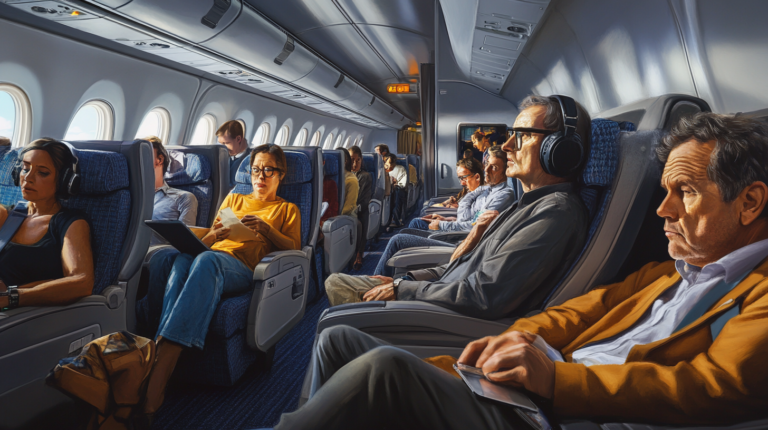Traveling with Pets and Service Animals: A Comprehensive Guide

Embarking on a journey with your beloved pet or service animal can be an enriching and joyful experience, creating cherished memories as you explore new destinations together. However, turning this dream into reality requires careful planning and a thorough understanding of various regulations to ensure a smooth and stress-free journey. Whether you’re flying domestically or venturing to international locales, understanding the rules and preparing accordingly is essential for the safety and comfort of both you and your animal companion. By familiarizing yourself with comprehensive guidelines on pet and service animal travel , you can confidently navigate the complexities of traveling with your four-legged friend.
Understanding Pet Travel Regulations
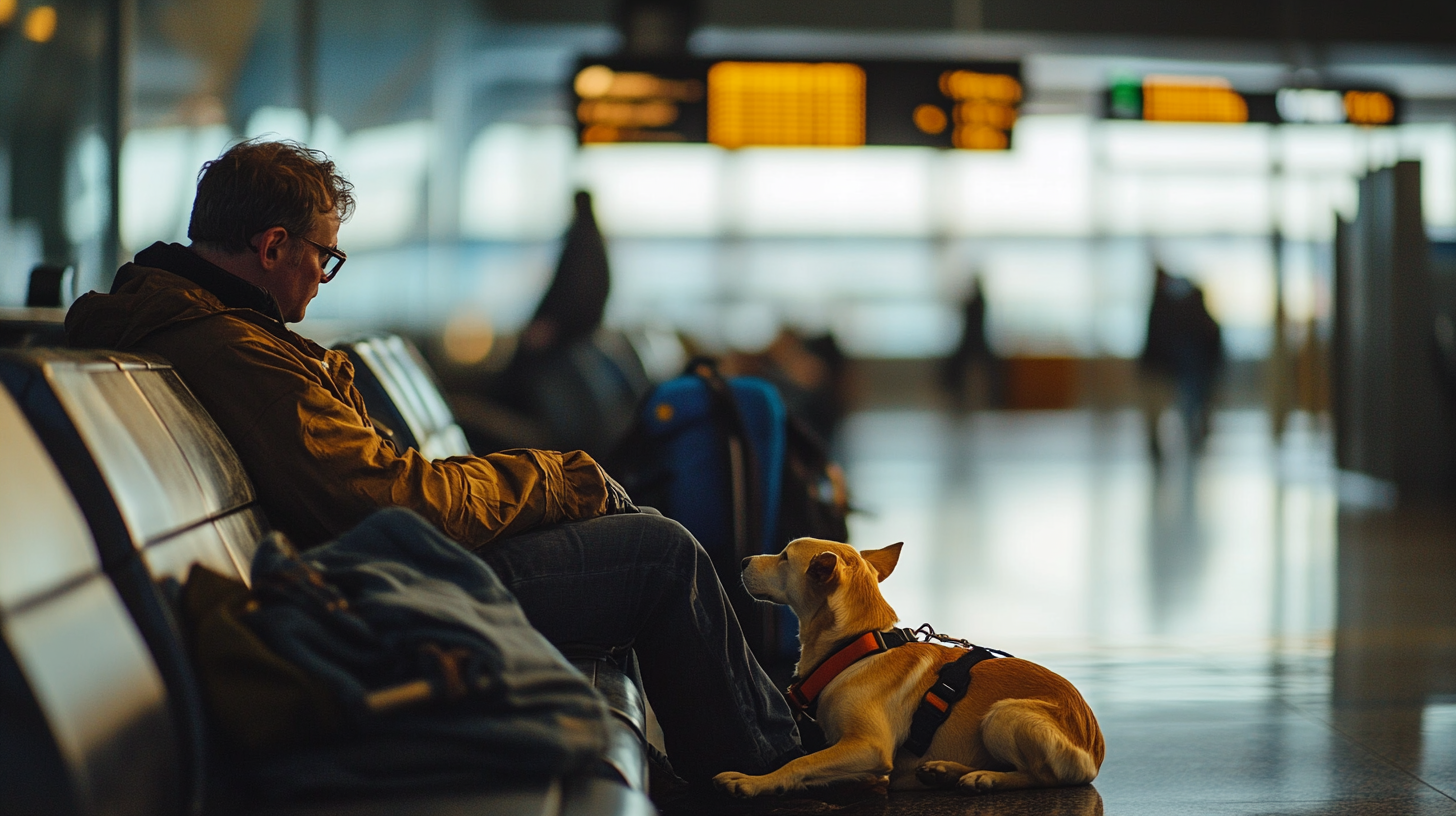
Definition of Pets
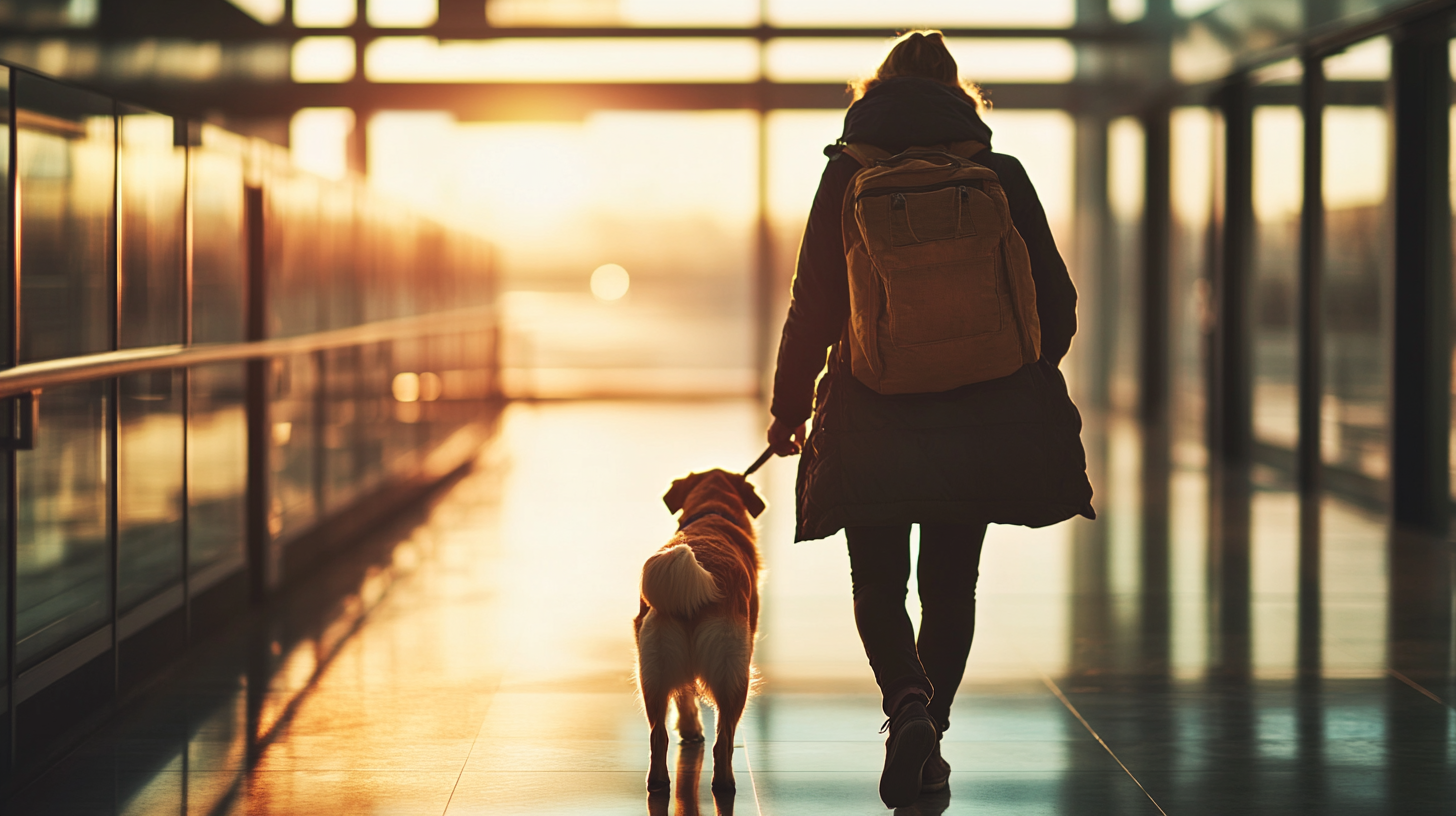
Under official regulations, pets are defined as privately owned companion animals that are not intended for research or resale. This typically includes dogs, cats, birds, and certain small mammals that share our homes and daily lives. However, it’s important to note that not all animals qualify as pets due to concerns about diseases and ecological impact. Exotic animals, such as certain reptiles or primates, may be subject to stricter regulations or bans. This distinction is crucial when preparing for travel, as certain animals may be restricted or subject to additional requirements. Understanding these nuances helps ensure compliance with international pet travel regulations and restrictions , preventing unexpected hurdles during your journey.
Health Certificates and Documentation
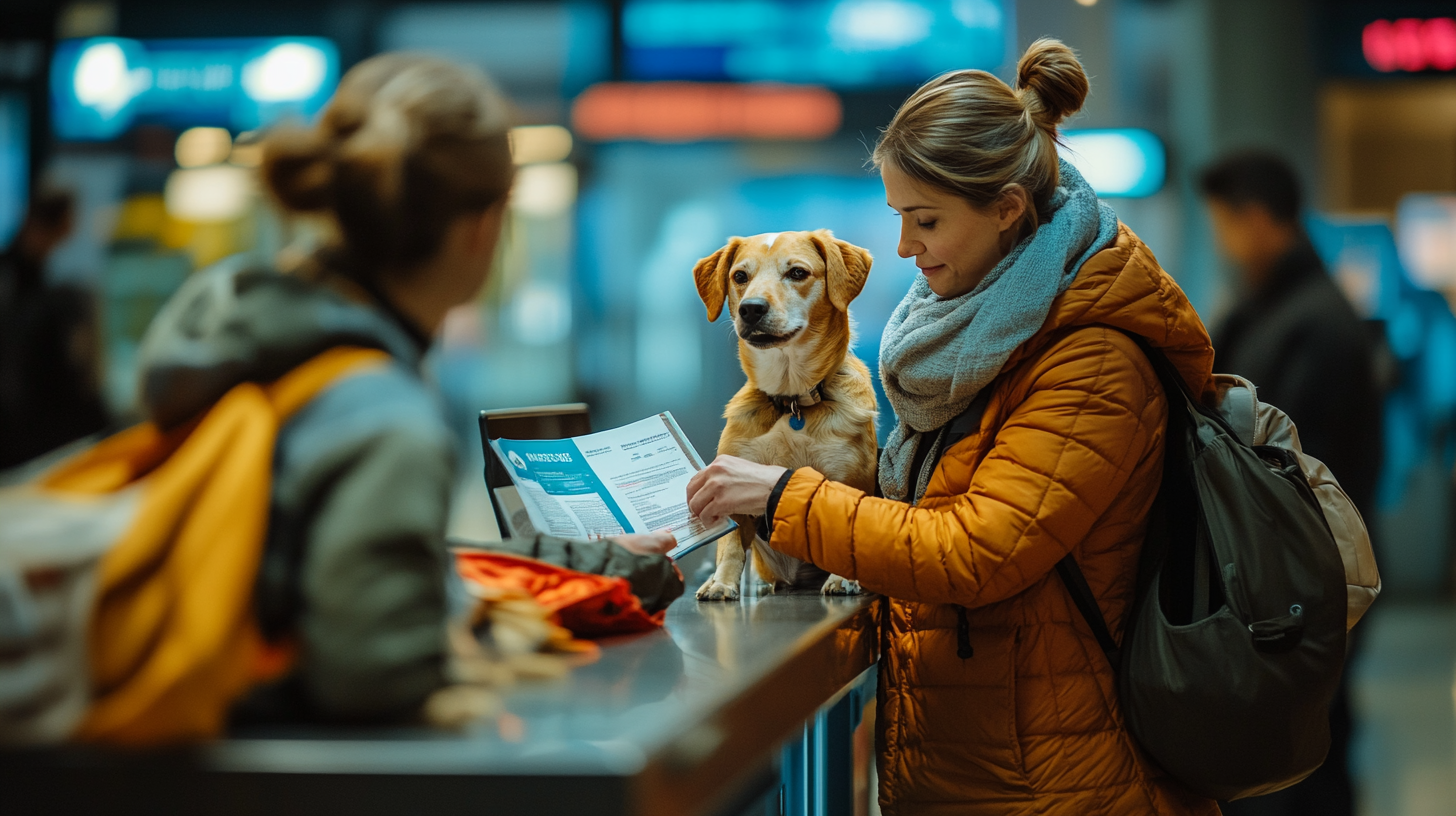
When traveling with a pet to another state or country, obtaining a health certificate is often a mandatory step. This document, officially known as a Certificate of Veterinary Inspection (CVI), verifies that your pet meets the health requirements of your destination, including vaccinations and absence of infectious diseases. The process can take time, particularly if rabies vaccinations or titer tests are required, so it’s advisable to contact your veterinarian promptly. They can guide you through the necessary steps, ensuring all vaccinations and medical checks are completed in advance. Additionally, some destinations may require pet microchipping and identification procedures , which provide a permanent form of ID for your pet and can be essential in case they become lost.
Importance of Official Government Websites

For accurate and up-to-date information, always consult official U.S. government websites, identifiable by their .gov domains and secure HTTPS connections. These sites, such as the U.S. Department of Agriculture’s Animal and Plant Health Inspection Service (APHIS), provide reliable guidance on the regulations and requirements for traveling with pets and service animals. Relying on unofficial sources or outdated information can lead to complications, such as quarantine delays or denied entry for your pet. Sharing sensitive information should only be done on these secure platforms to protect your personal data. Utilizing official pet travel advisories and resources ensures that you’re receiving the most current and accurate information directly from regulatory authorities.
Traveling with Pets
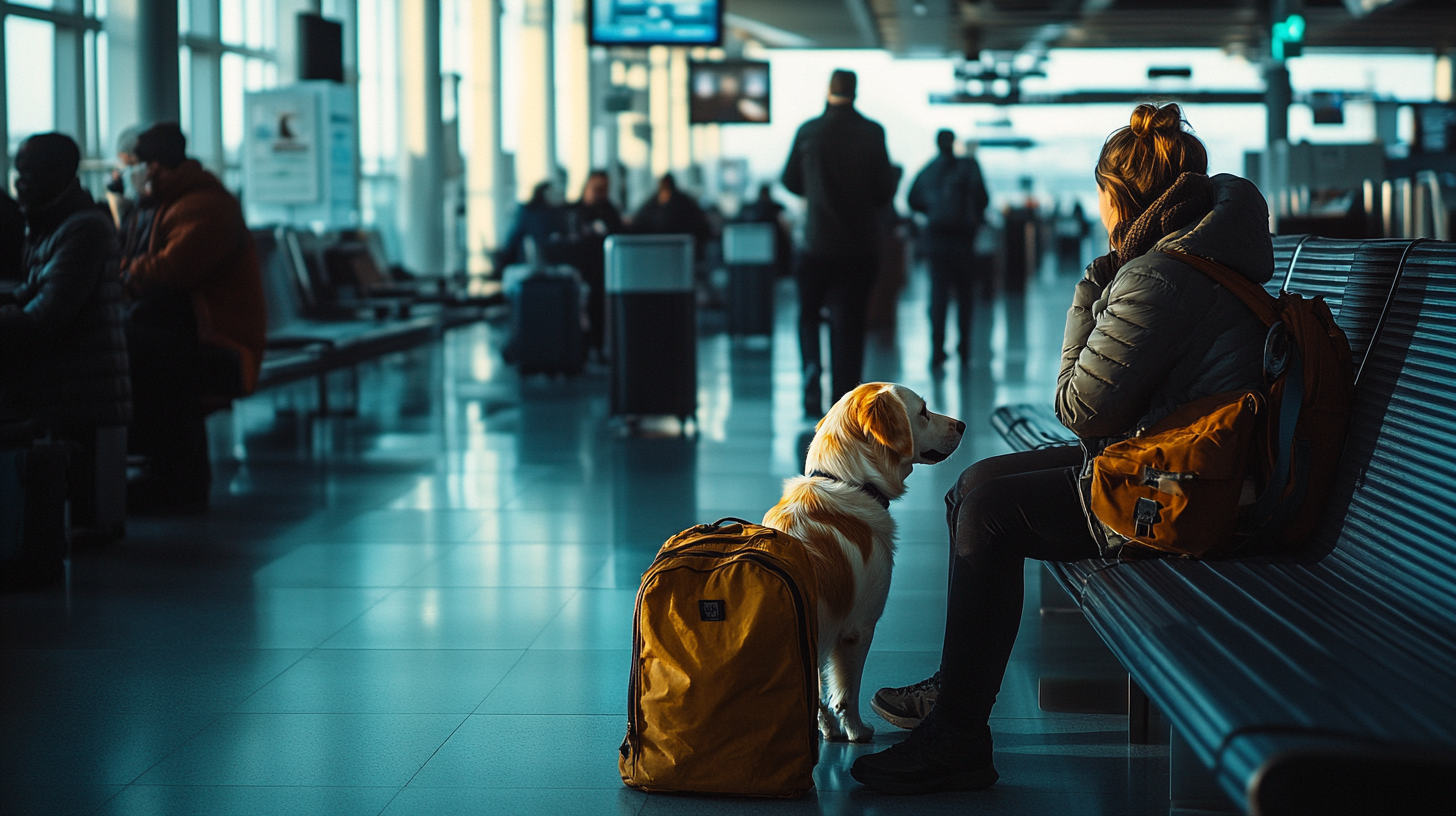
Airline Policies for Pets
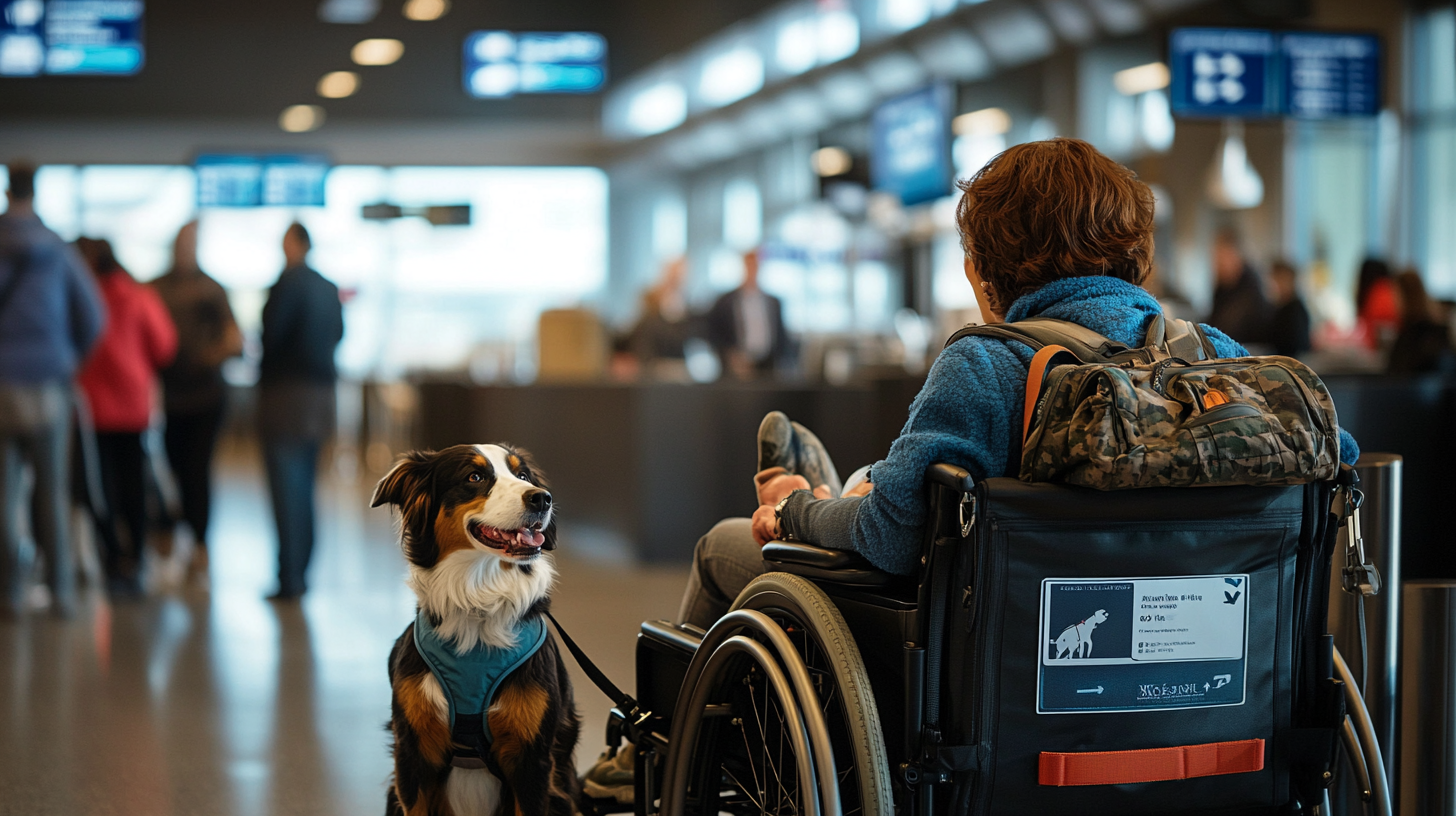
Airlines have specific policies regarding pet travel, which can vary widely and may change with little notice. For example, American Airlines allows pets to travel as carry-on or through cargo services, with restrictions based on breed, size, and destination. Other airlines might have different guidelines, such as limitations on the number of pets per flight or embargoes during extreme weather conditions. It’s crucial to check your airline’s pet policy well in advance of your trip to understand options, fees, and requirements. Being informed about airline-specific pet travel policies and considerations helps you select the most suitable carrier and prepare accordingly for your journey.
In-Cabin Travel
Small dogs, cats, and household birds are often allowed to travel in the cabin for a fee, provided they fit comfortably in a soft-sided kennel that can be stowed under the seat in front of you. This arrangement allows pets to remain close to their owners, which can reduce anxiety for both parties. However, there are specific requirements regarding the size of the carrier, the number of animals permitted, and restrictions during peak travel times. Adherence to pet policies is essential to avoid disruptions, such as being denied boarding or incurring additional fees. Familiarizing yourself with tips for successful in-cabin pet travel can enhance your preparation and contribute to a pleasant flight experience.
Cargo Travel
For pets that cannot travel in the cabin due to size or other restrictions, cargo options may be available. Services like American Airlines’ PetEmbark® offer specialized care for pets traveling in the cargo hold, with attention to climate control and handling procedures tailored to animal safety. While airlines take measures to ensure the well-being of pets in cargo, it’s important to consider the potential stress and risks involved. Selecting an airline with a strong record of pet safety and reviewing guidelines for safe pet cargo travel can help you make an informed decision about this option.
Restrictions Based on Breed, Size, and Destination
Certain breeds, particularly brachycephalic (short-nosed) dogs and cats like Bulldogs, Pugs, or Persians, may be restricted from flying due to increased health risks during air travel. Size limitations can also apply, impacting whether a pet can fly in the cabin or must travel as cargo. Additionally, specific destinations have their own regulations, and countries like Australia, Canada, and members of the EU may have stringent quarantine and documentation requirements. Researching destination-specific pet import regulations is imperative to ensure compliance and avoid unexpected challenges upon arrival.
Preparing Your Pet for Travel
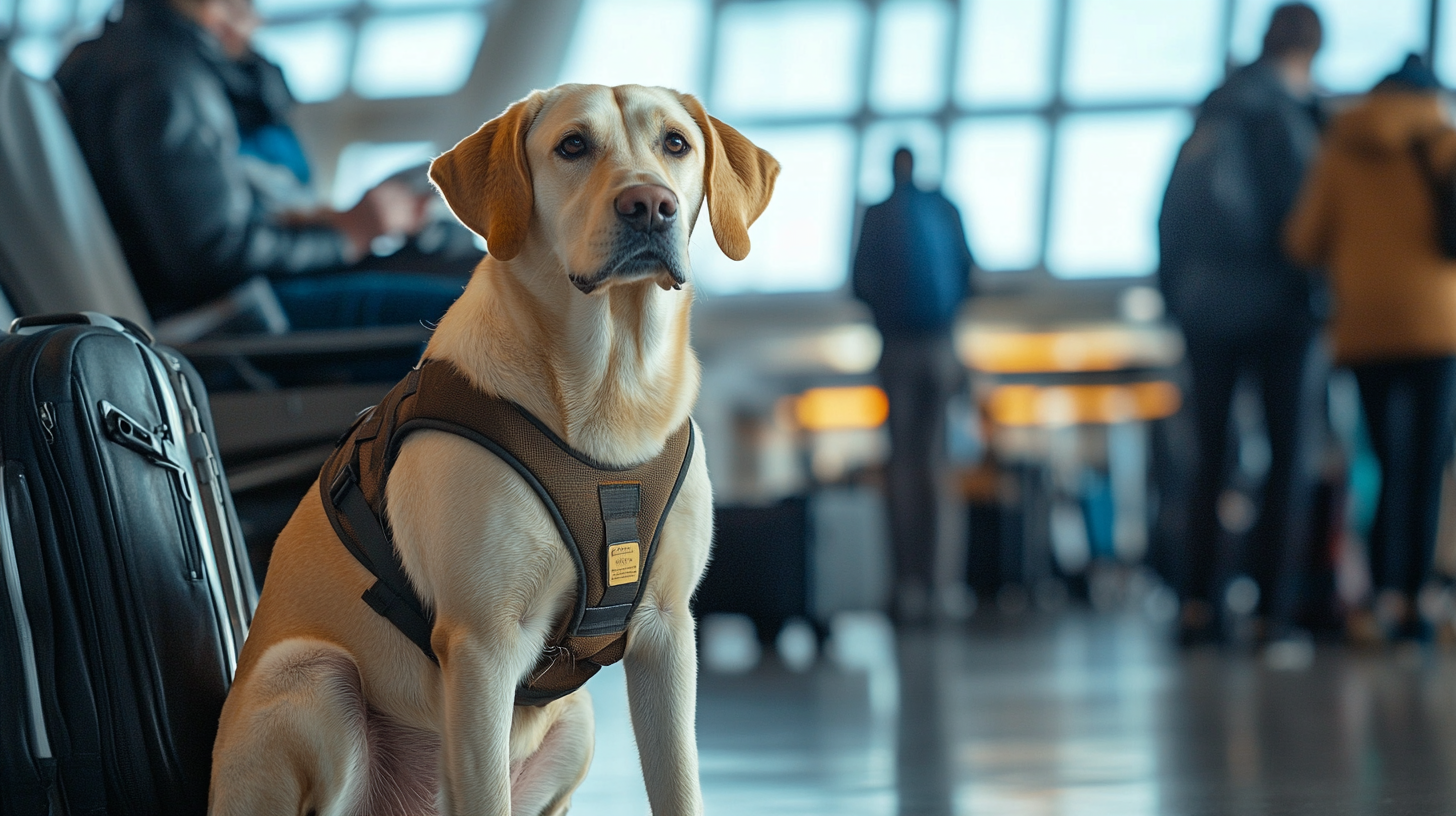
Acclimating Pets to Carriers
Ensuring your pet is comfortable in their carrier is vital for a stress-free journey. Start by introducing the carrier in a positive context at home, leaving it open in a common area with familiar bedding or toys inside. Allow your pet to explore it voluntarily, rewarding them with treats and praise to create a positive association. Gradually increase the amount of time your pet spends inside, and simulate travel conditions by carrying them around or taking short trips. This process helps reduce anxiety and prepares them for smooth pet travel experiences , both in the air and on the ground.
Pet Travel Safety Tips
National Pet Travel Safety Day highlights the importance of preparing pets for road trips and other forms of travel. Experts recommend starting with short drives to acclimate pets to car travel, ensuring they are comfortable and secure. Use well-ventilated carriers or harnesses designed for vehicle safety to protect your pet in case of sudden stops or accidents. Never leave pets unattended in parked vehicles, as temperatures can reach dangerous levels quickly. Providing familiar items like toys or blankets can also help keep your pet calm during the journey. Reviewing comprehensive pet travel safety checklists can help you cover all necessary preparations for a safe trip.
Crate Training Tips
For air travel, an International Air Transport Association (IATA)-approved crate is often required. Choose a crate that is spacious enough for your pet to stand, turn around, and lie down comfortably, while also being sturdy and well-ventilated. Avoid using the crate as punishment; instead, make it a safe and inviting space by placing treats, toys, and bedding inside. Practice crate training well in advance of your trip, gradually increasing the duration your pet spends inside. If needed, consult a professional trainer for guidance on effective crate training techniques. Accessing expert advice on pet crate training for travel can provide valuable insights to ensure your pet adapts comfortably.
Traveling with Service Animals
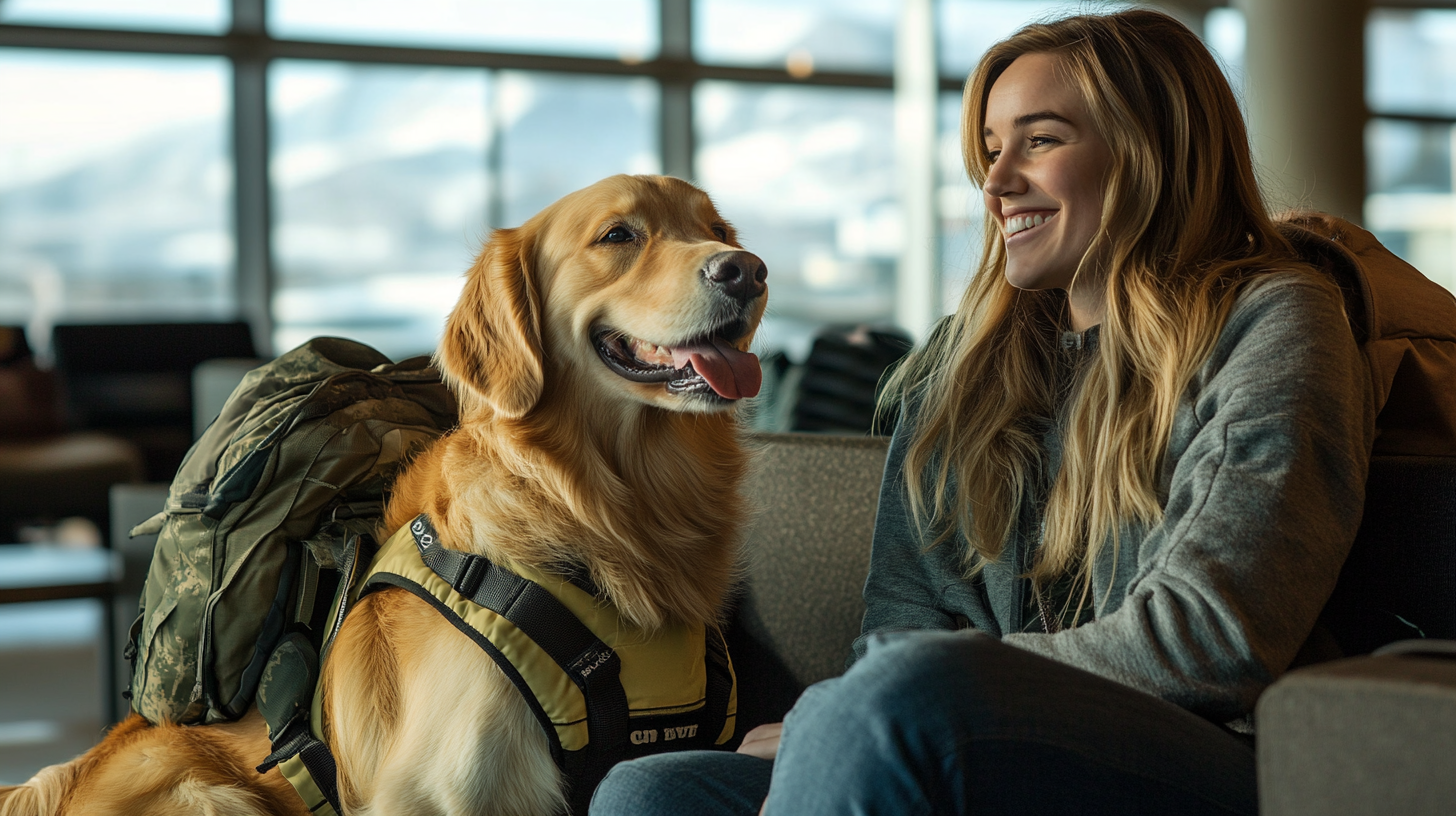
Definition of Service Animals under ACAA and ADA
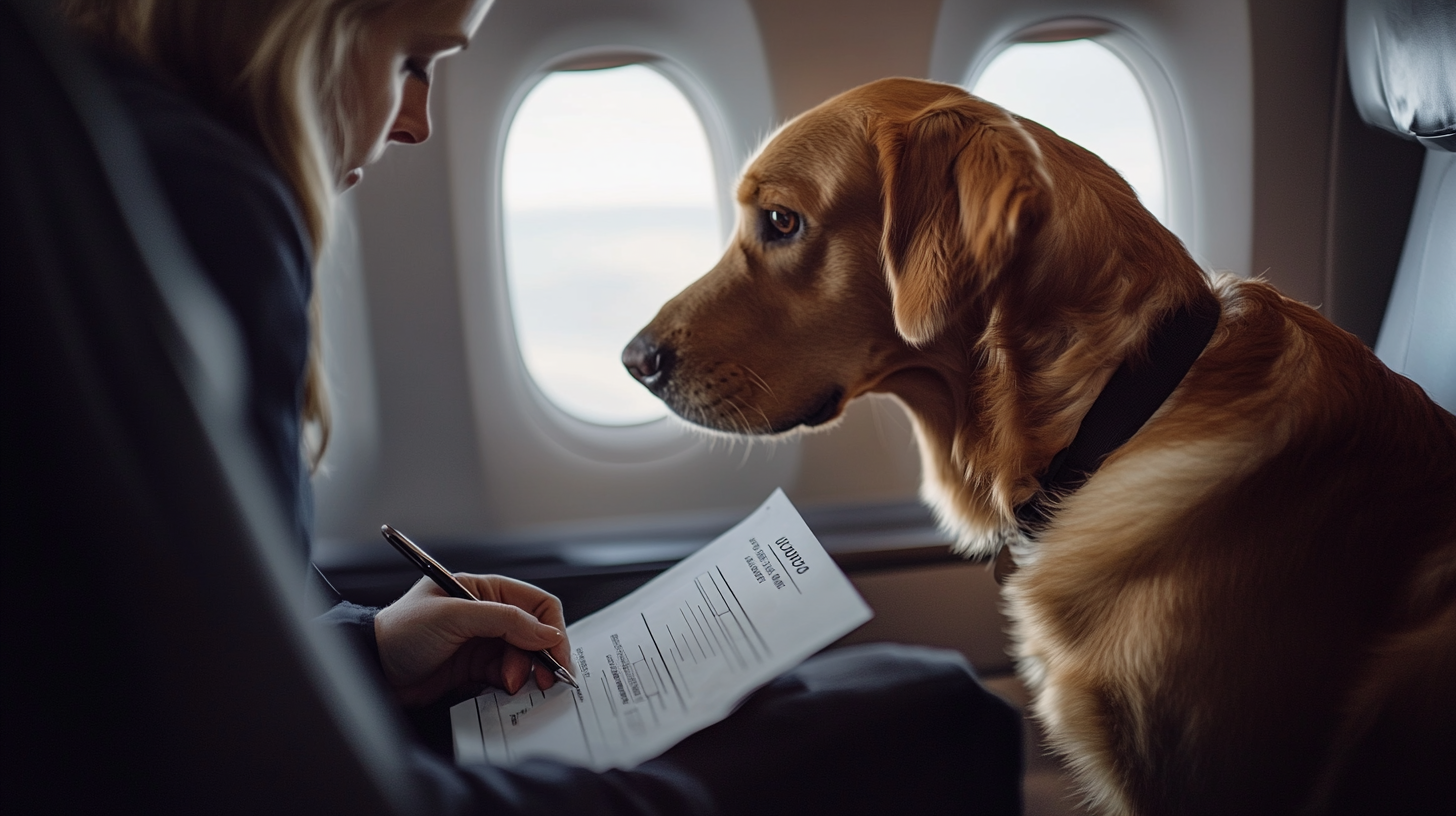
The Air Carrier Access Act (ACAA) defines service animals as dogs that are individually trained to perform tasks or assist individuals with disabilities, including physical, sensory, psychiatric, intellectual, or other mental disabilities. This definition does not include emotional support animals, comfort animals, companionship animals, or service animals in training. Understanding this distinction is crucial, as it affects your rights and the documentation required when traveling by air. Familiarizing yourself with detailed guidelines on service animal definitions and rights ensures proper adherence to regulations and helps prevent misunderstandings during travel.
DOT Service Animal Air Transportation Form
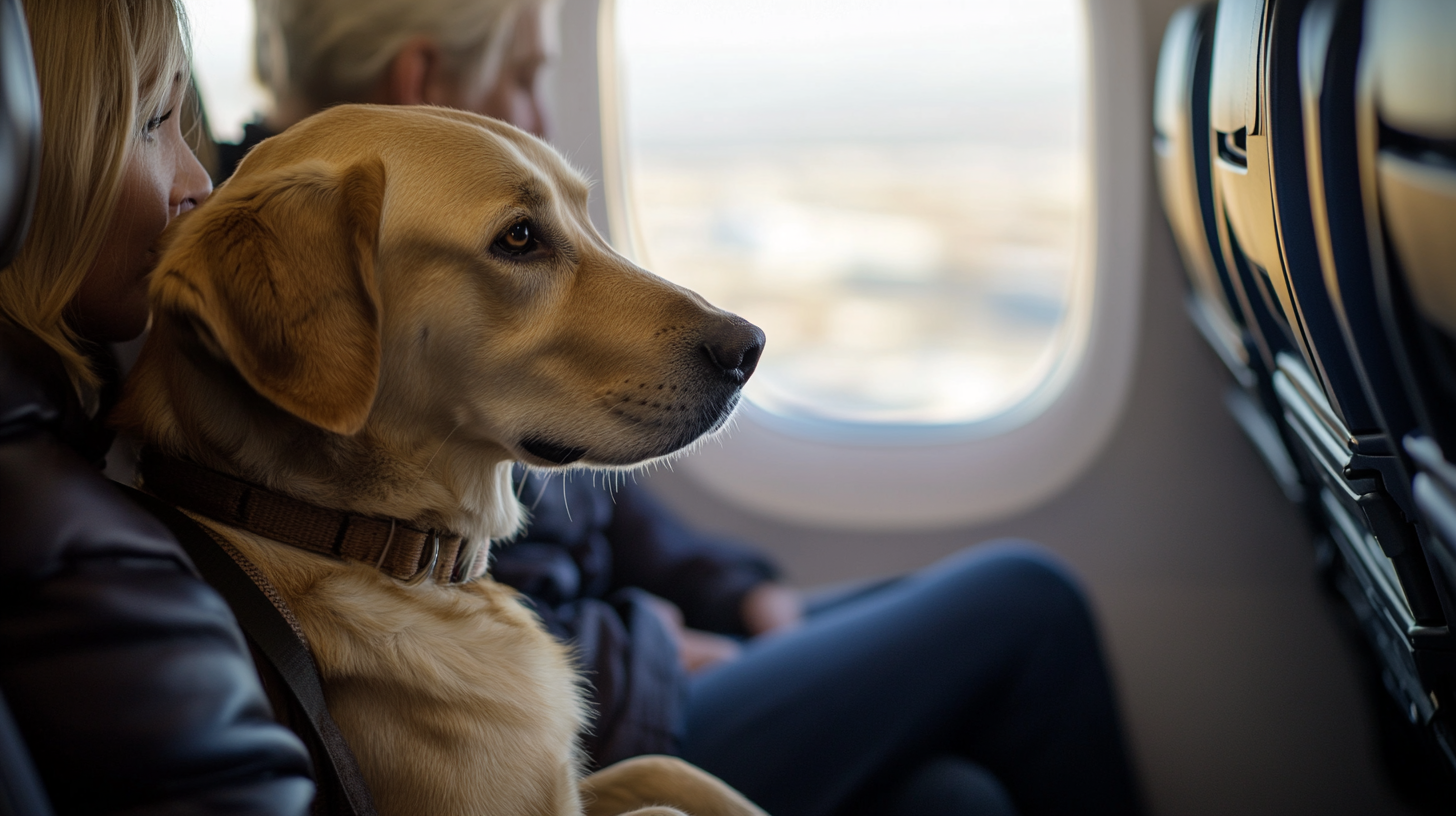
To travel with a service animal, airlines require the U.S. Department of Transportation (DOT) Service Animal Air Transportation Form. This form confirms the dog’s health, behavior, and training, and must be submitted to the airline, typically 48 hours before departure. The form includes attestations by the handler and may require additional documentation, such as vaccination records. Completing this form accurately and submitting it on time is essential for a hassle-free travel experience. Accessing guidance on completing DOT service animal forms can help streamline the process and ensure all requirements are met.
Airline Policies for Service Animals

American Airlines
Service dogs are allowed to fly in the cabin free of charge on American Airlines but must meet certain requirements. The dog must be harnessed, leashed, or otherwise under the control of the handler at all times and must behave appropriately in public settings. While service animals are exempt from some pet restrictions, documentation may be required, especially for international travel where destination countries have specific importation laws. Reviewing American Airlines’ service animal policies and procedures provides detailed information on preparing for your flight.
Delta Airlines
Delta requires passengers traveling with service animals to comply with eligibility requirements and complete the DOT Service Animal Air Travel form. For flights over eight hours, a Relief Attestation form is also necessary, confirming that the animal can relieve itself in a sanitary manner during the journey. Service animals must be vaccinated, at least four months old, and are not permitted in exit rows or to occupy other customers’ spaces. Understanding Delta Airlines’ comprehensive service animal guidelines ensures compliance and helps avoid any disruptions during travel.
Documentation and Requirements
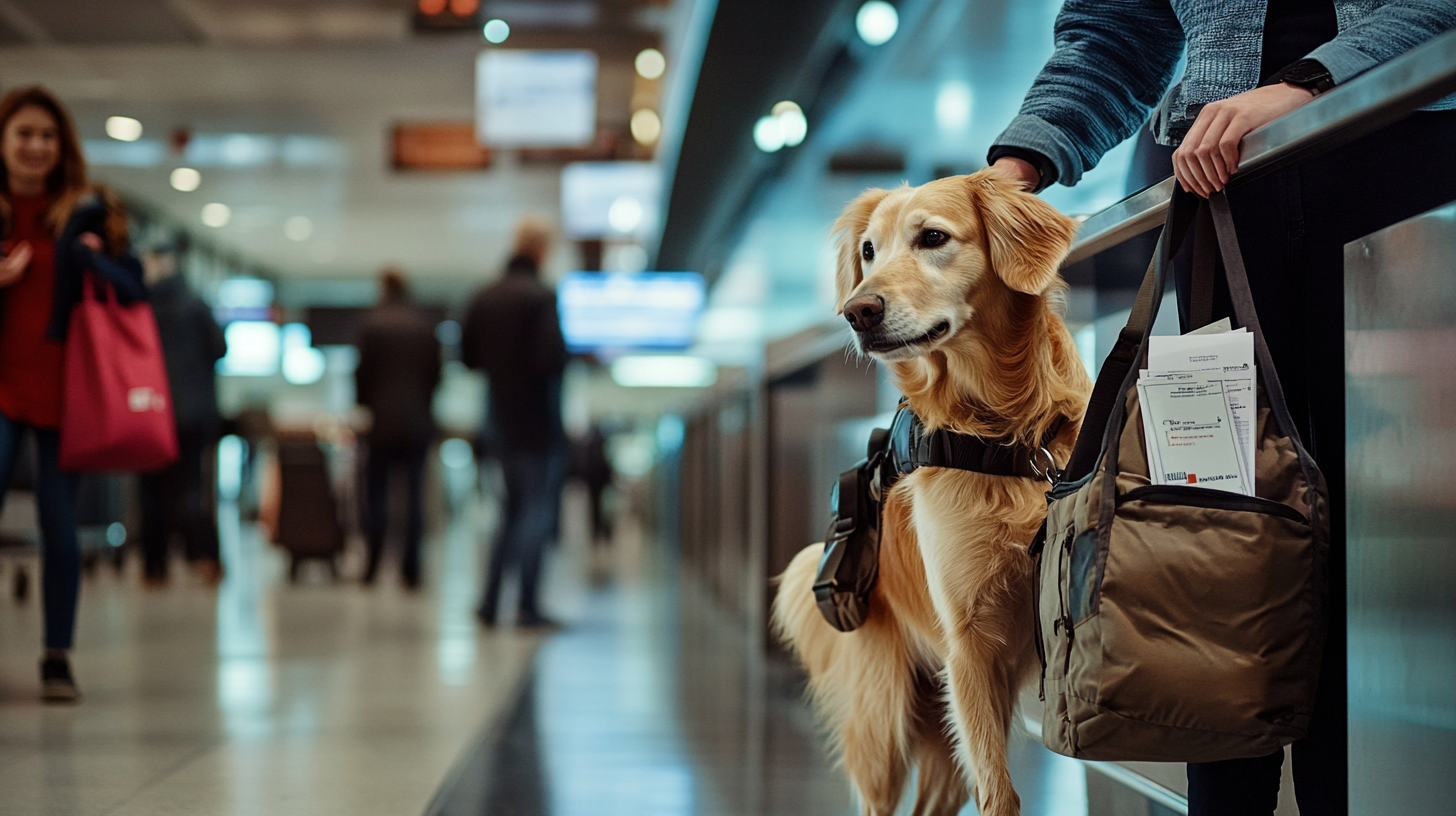
Health and Vaccination Requirements
Service animals must be vaccinated and in good health to travel. Airlines may request proof of vaccinations, such as rabies certificates, and health certificates issued by a licensed veterinarian. These documents help ensure the safety of all passengers and animals on board. The animal should also be well-behaved and under the control of the handler at all times, without exhibiting aggressive or disruptive behaviors. Preparing complete health documentation for service animals well in advance of your trip can prevent last-minute issues.
Relief Attestation Form
For longer flights, airlines like Delta require a Relief Attestation form, ensuring that the service animal can relieve itself in a sanitary manner during the journey. This may involve the use of absorbent pads or other methods. This form helps maintain hygiene and comfort for all passengers and is particularly important on international or transoceanic flights. Understanding the requirements for managing service animal needs on extended flights allows you to prepare appropriately.
International Travel Considerations
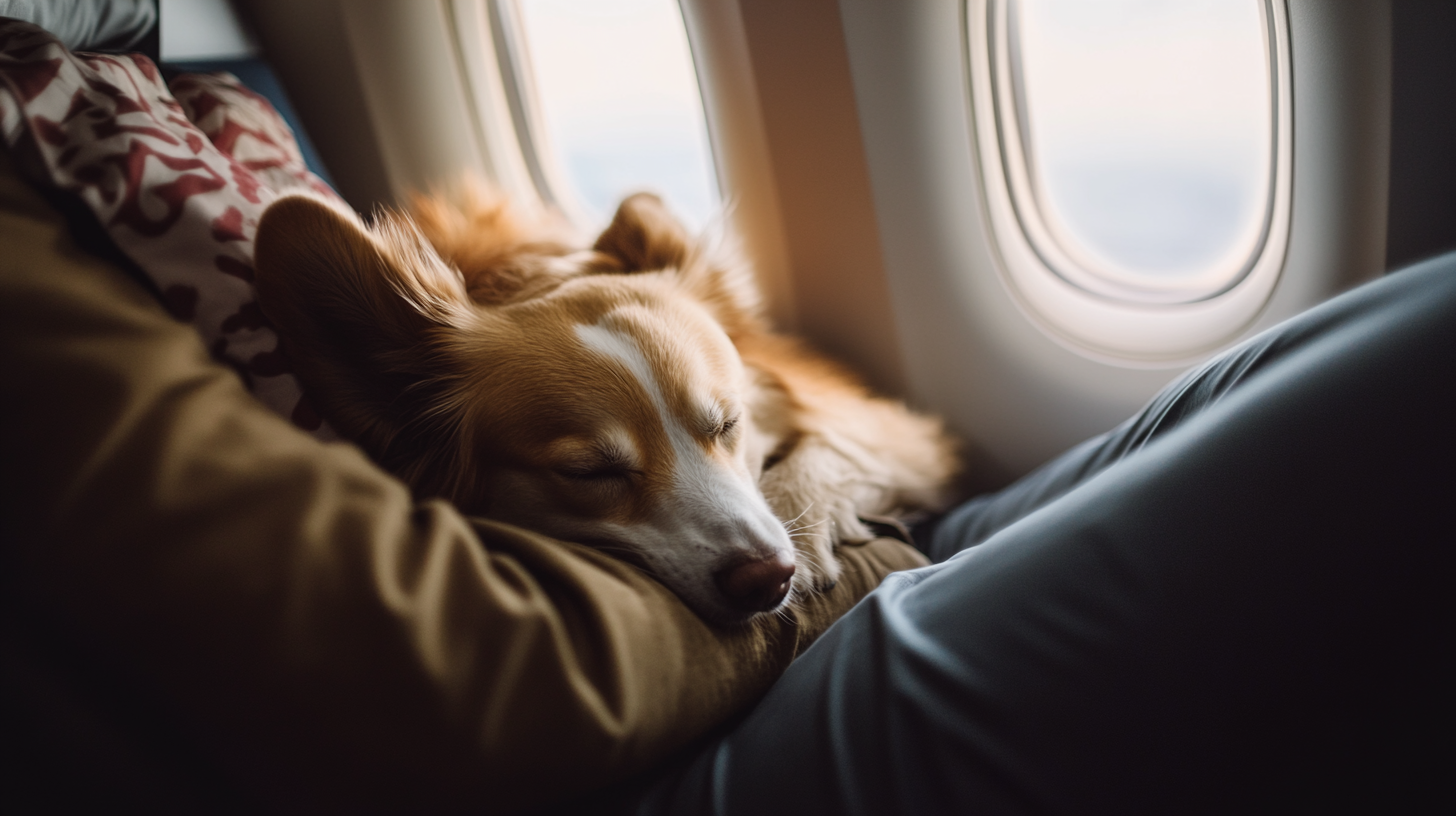
CDC Regulations
The Centers for Disease Control and Prevention (CDC) has implemented new rules for bringing dogs into the United States, effective August 1, 2024. These include specific requirements for dogs from countries classified as high-risk for rabies, such as obtaining a valid rabies vaccination certificate, microchipping the dog for identification, and providing a negative rabies serologic titer from an approved laboratory. These measures are in place to prevent the reintroduction of rabies into the U.S. Ensuring compliance with CDC’s international dog import regulations is essential for a smooth re-entry process.
Country-Specific Requirements
International travel with service animals often involves navigating varying regulations across different countries. Some nations may require quarantine periods, additional vaccinations, or specific documentation like import permits. For example, countries like the United Kingdom have strict pet travel schemes to prevent the spread of diseases. It’s imperative to confirm these requirements well in advance by consulting country-specific service animal travel guidelines to avoid complications upon arrival.
Re-entry into the U.S.
Upon returning to the United States, re-entry guidelines must be followed to avoid delays or quarantine of your service animal. The U.S. Department of Agriculture’s Animal and Plant Health Inspection Service (APHIS) recommends checking re-entry requirements, which may include presenting valid health certificates, proof of rabies vaccination, and even advance notification to border inspection stations. Being well-prepared with re-entry procedures for service animals into the U.S. ensures a smooth transition back home.
Traveling with Emotional Support Animals
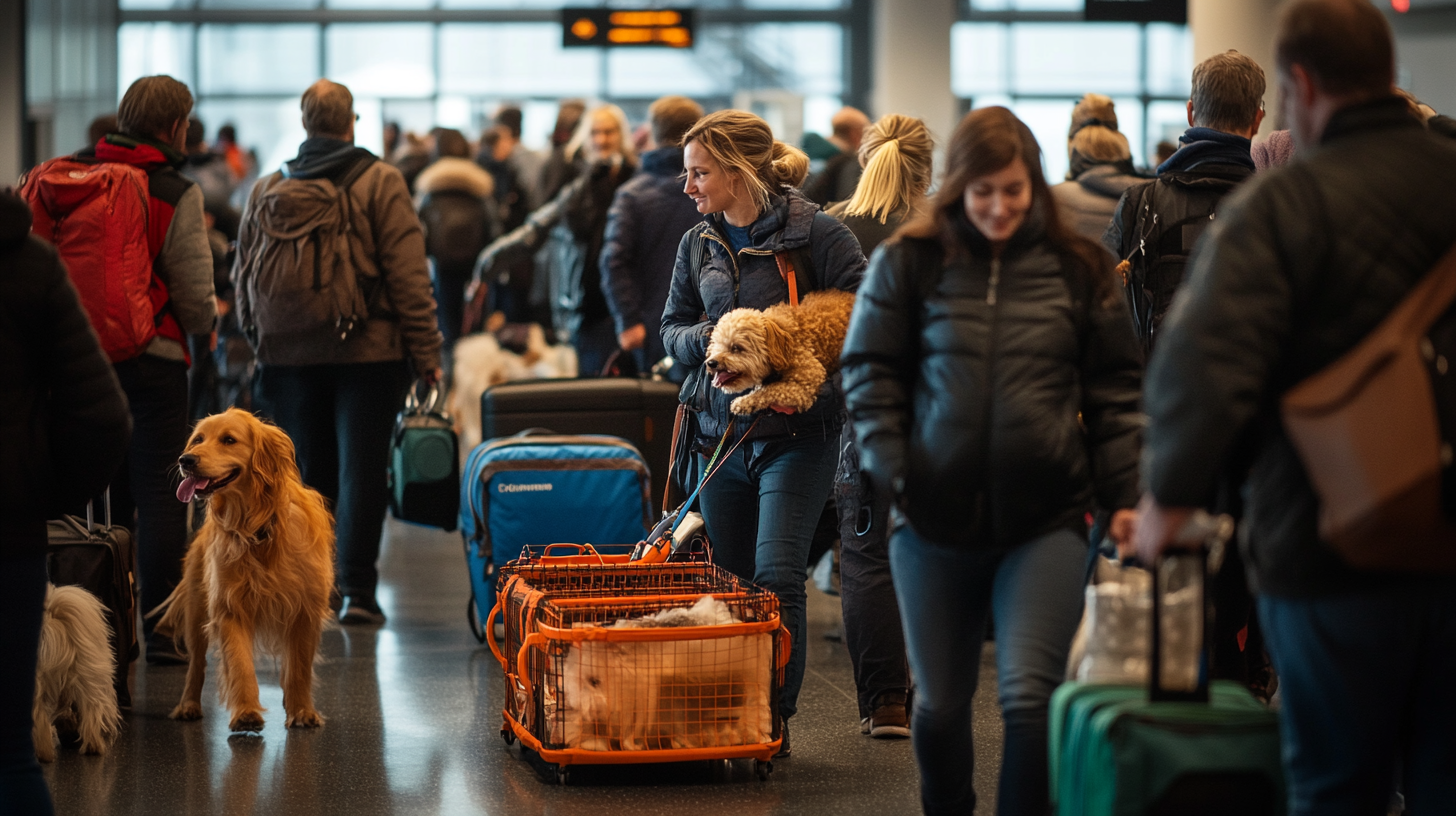
Policy Changes Post-2020 DOT Regulation
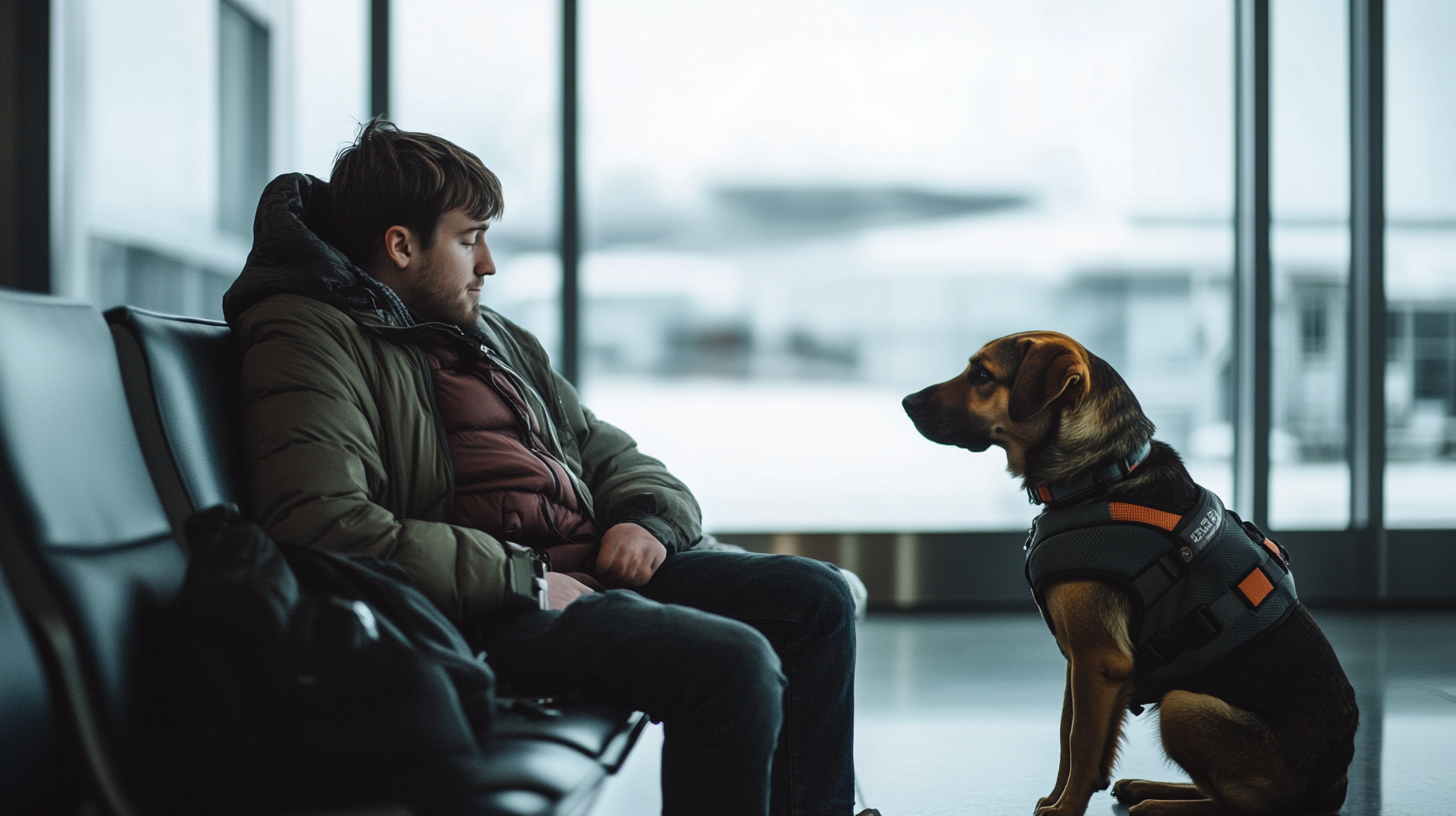
In 2020, the DOT revised its policies, distinguishing emotional support animals (ESAs) from service animals. Airlines are no longer required to recognize emotional support animals as service animals, and they are now treated as pets. This change means ESAs are subject to the airline’s pet policies, including applicable fees, carrier requirements, and breed or species restrictions. Staying informed about current regulations for emotional support animals in air travel helps set realistic expectations and allows for appropriate planning.
Differences Between ESAs and Service Animals
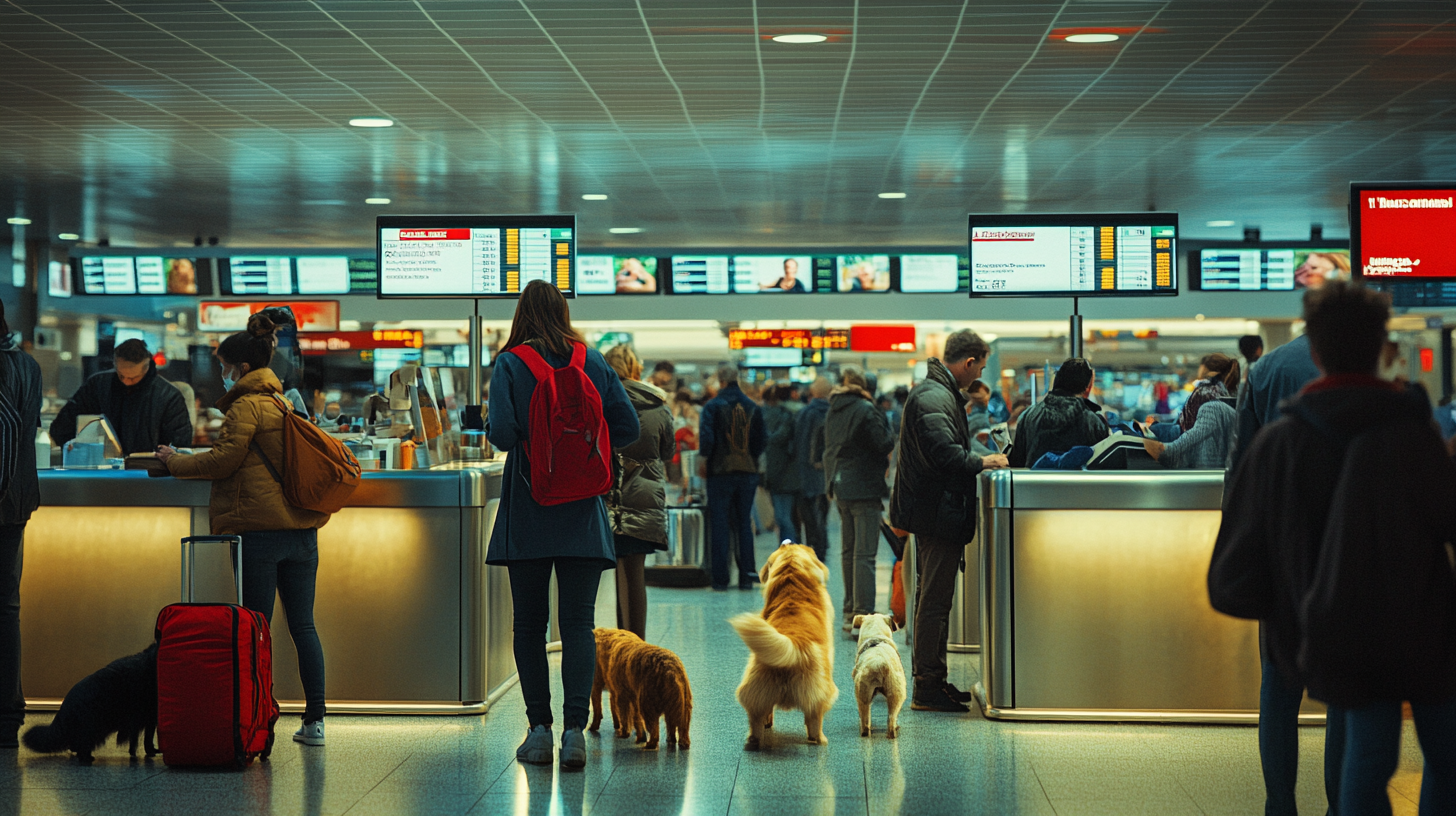
Emotional support animals provide comfort to individuals with emotional or psychological conditions but are not trained to perform specific tasks related to a disability. As such, they do not have the same rights under the ACAA or ADA as service animals. While ESAs can play a vital role in their owner’s well-being, it’s important to recognize that they must adhere to standard pet travel policies when flying. Understanding the key distinctions between service animals and emotional support animals is crucial for compliance with airline regulations.
Airline Policies and Fees
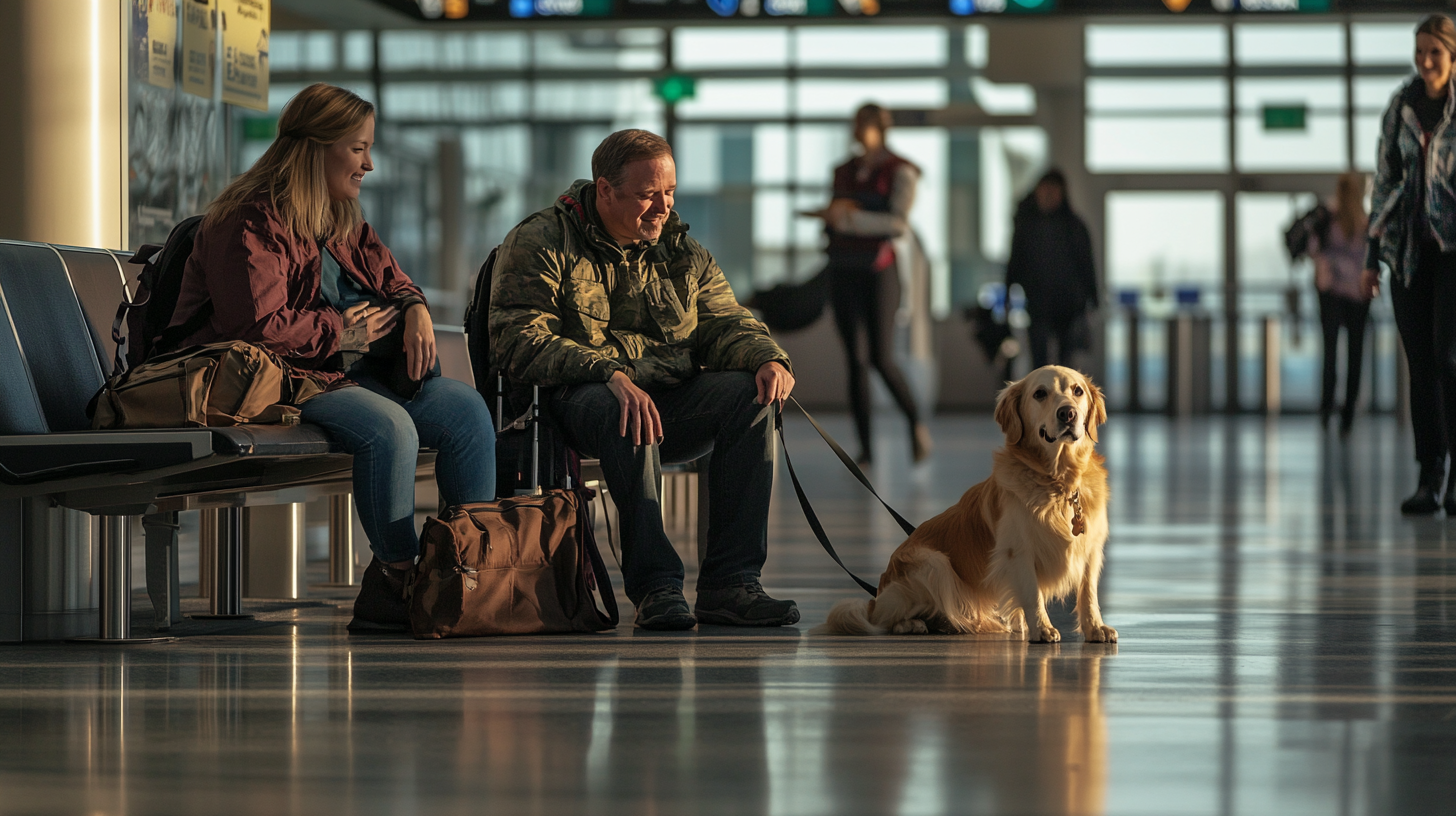
Airlines typically charge fees for traveling with pets, including emotional support animals. These fees can vary widely, and there may be limitations on the number of pets allowed per flight or restrictions based on the animal’s size and breed. It’s important to check with the specific airline for details on fees, carrier requirements, and any other restrictions that may apply. Being prepared with strategies for traveling with emotional support animals can help you navigate these policies effectively.
Legal Rights and Protections
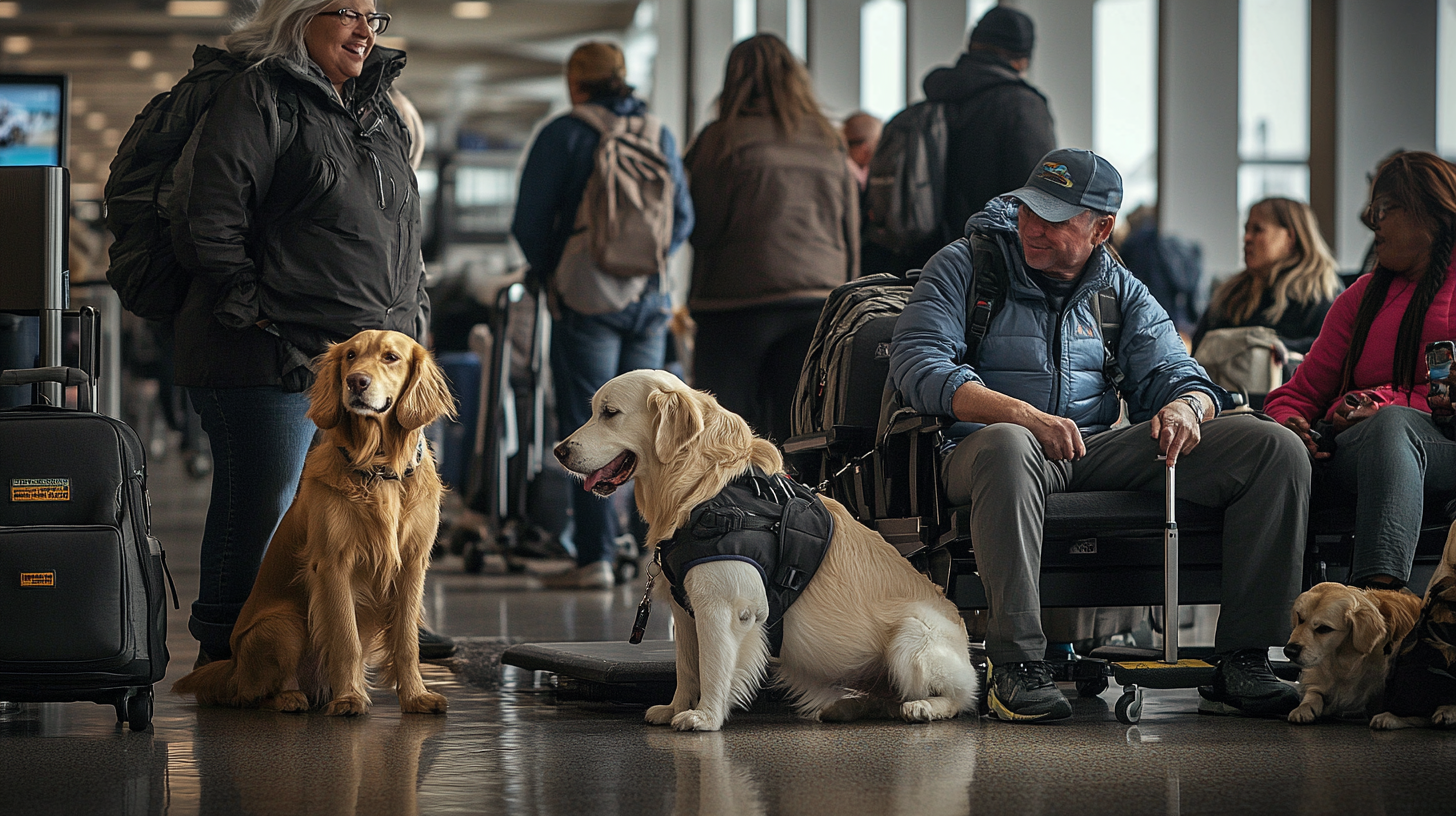
ADA and ACAA Protections
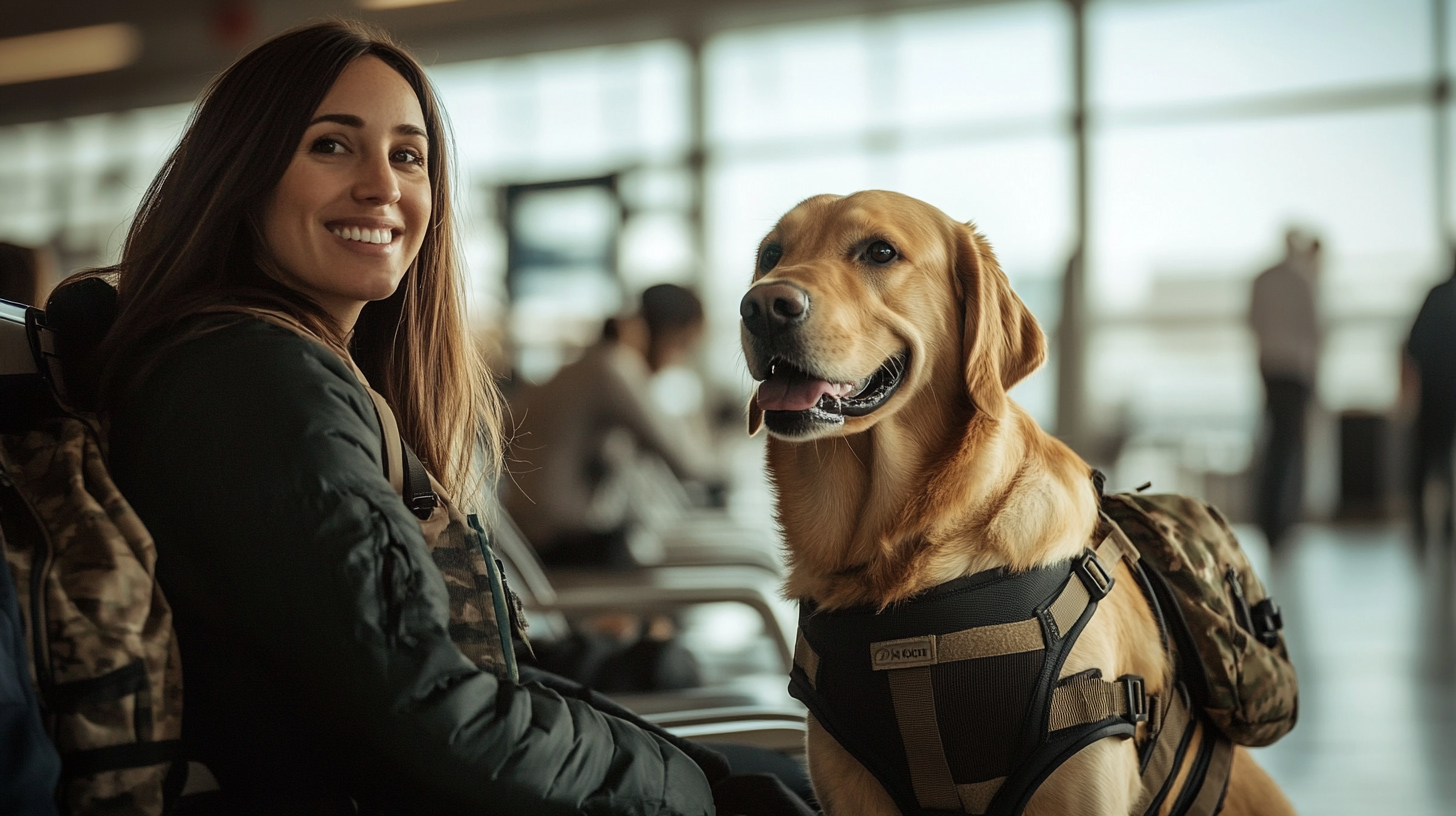
Individuals with disabilities have rights protected under the Americans with Disabilities Act (ADA) and the Air Carrier Access Act (ACAA). The ADA covers public accommodations, including airports, hotels, and other facilities, requiring acceptance of service animals without extra charges. The ACAA mandates that airlines accommodate service dogs, although they are permitted to request documentation and place certain restrictions to ensure safety. Familiarizing yourself with comprehensive overview of ADA and ACAA service animal protections helps you advocate for your rights while respecting the regulations in place.
Service Animals in Public Places and Transportation

Under Title II and Title III of the ADA, service animals must be allowed in public and private transportation, respectively. This includes buses, taxis, trains, and other modes of transport, as well as public spaces like restaurants, stores, and theaters. Service animals must be harnessed, leashed, or tethered unless these devices interfere with the service animal’s work or the individual’s disability prevents using these devices. Understanding service animal access rights in various public settings empowers you to navigate daily life without unnecessary barriers.
Accommodation in Hotels
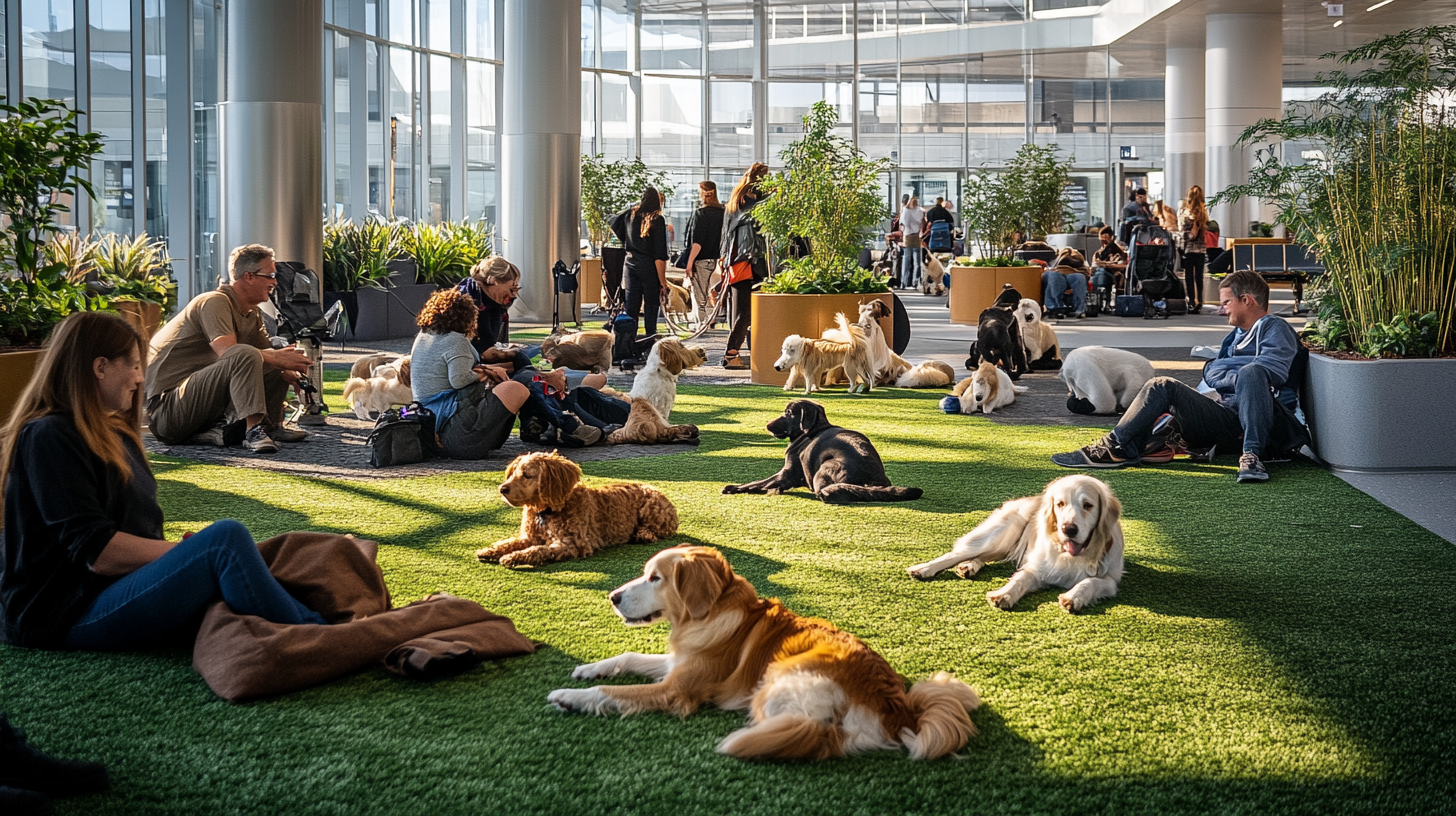
Hotels are considered public accommodations under Title III of the ADA and must allow service animals without imposing extra fees or segregating rooms. However, hotels may charge for any damage caused by the animal, similar to charges applied to other guests. It’s advisable to inform the hotel in advance that you will be traveling with a service animal, allowing them to prepare appropriately. Reviewing guidelines for staying in hotels with service animals can help ensure a comfortable and respectful experience for all parties involved.
Pet Relief Areas in Airports
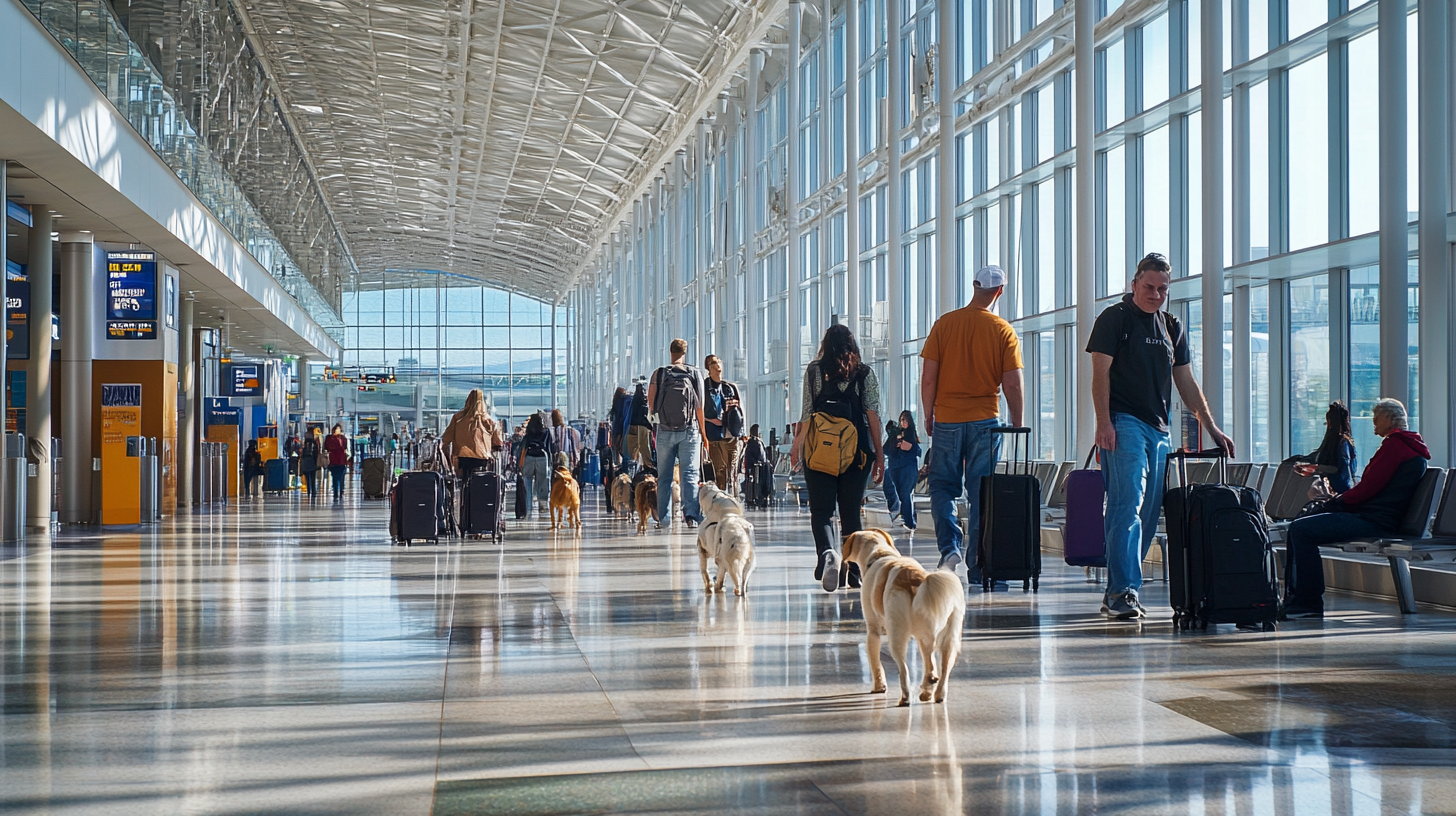
Washington Dulles International Airport
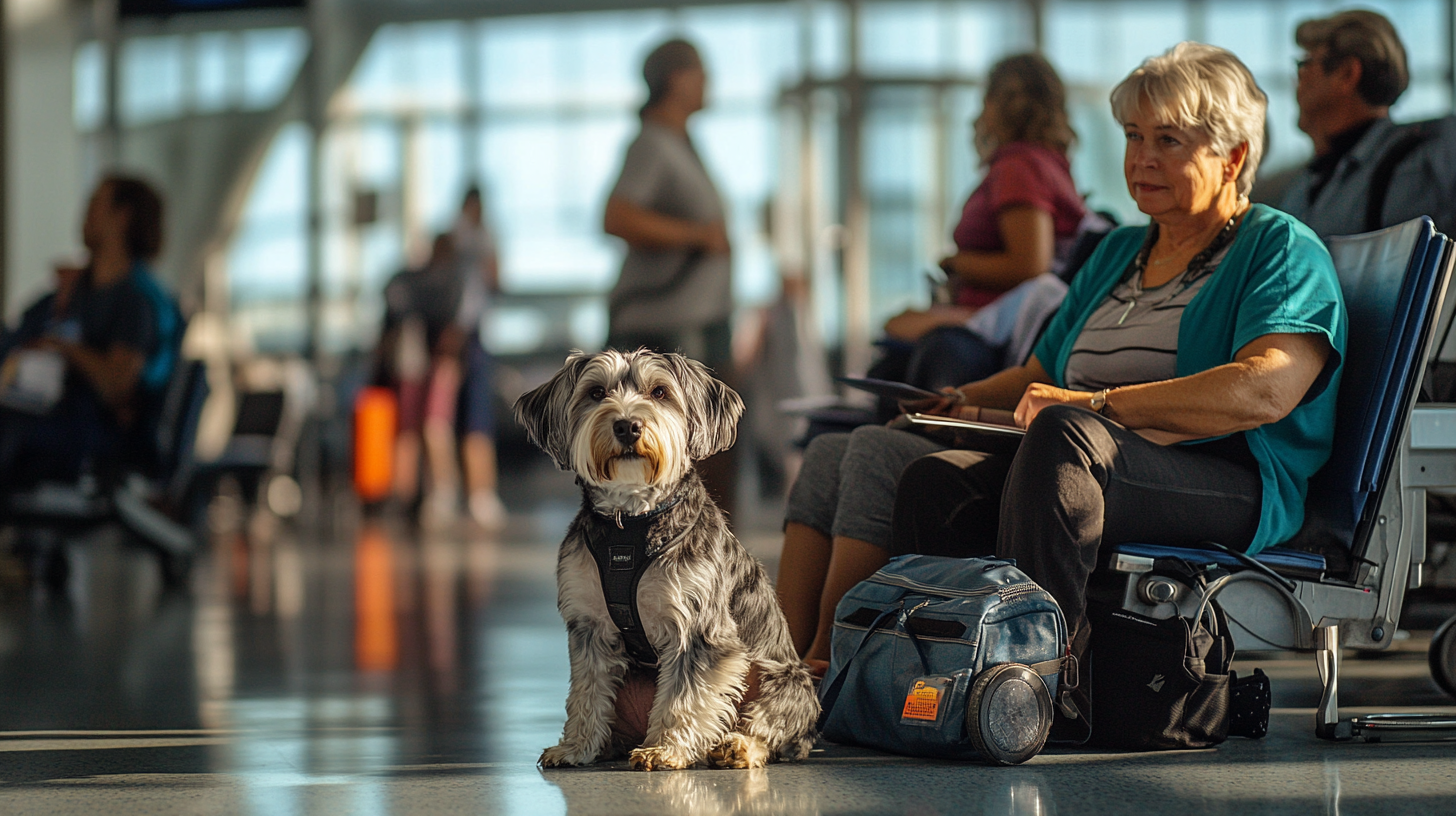
Examples of accommodating facilities include Washington Dulles International Airport, which provides Service Animal and Pet Relief Areas for travelers. These areas are available both inside the concourses (post-security) and outside the terminal (pre-security), ensuring that pets and service animals can relieve themselves conveniently during travel. They are equipped with waste bags, receptacles, and in some cases, artificial turf or real grass. Travelers are encouraged to clean up after their animals to maintain a clean environment for others. Accessing airport pet relief area directories and amenities can help you locate these facilities in various airports worldwide.
Additional Considerations

Benefits of Traveling with Pets
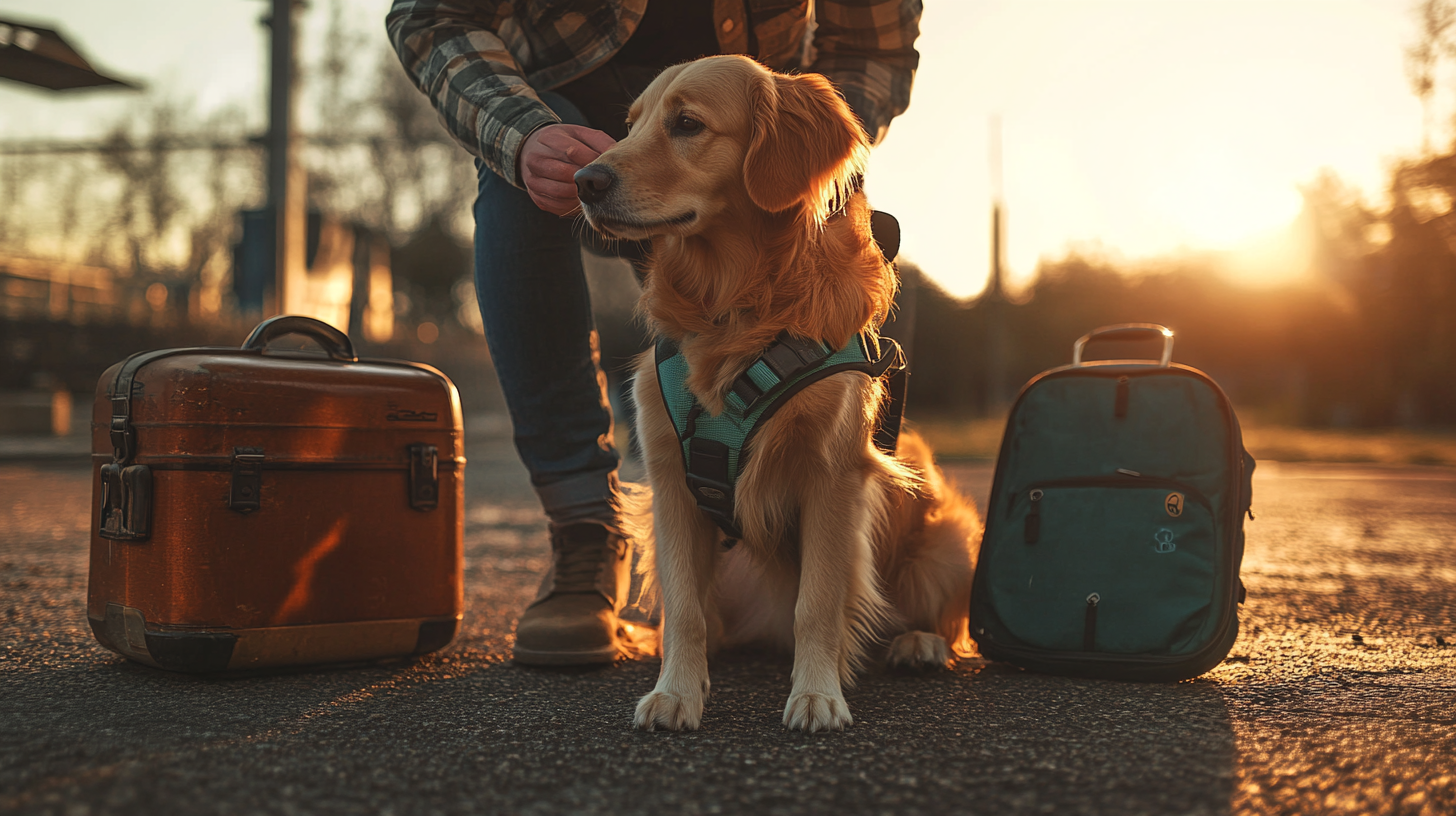
A 2023 survey revealed that most travelers prefer flying with pets over children, citing pets’ quieter and less disruptive behavior. Among 1,000 participants, the majority favored sitting next to pets rather than children, highlighting the social acceptance and enjoyment of pets in public spaces. Over a quarter of pet owners preferred traveling with their pets rather than their children, and 66% would bring pets everywhere if possible. This trend underscores the importance of accommodating pets in travel plans and reflects the growing resources available for pet-friendly travel experiences and destinations .
Pet Travel Safety Day Tips
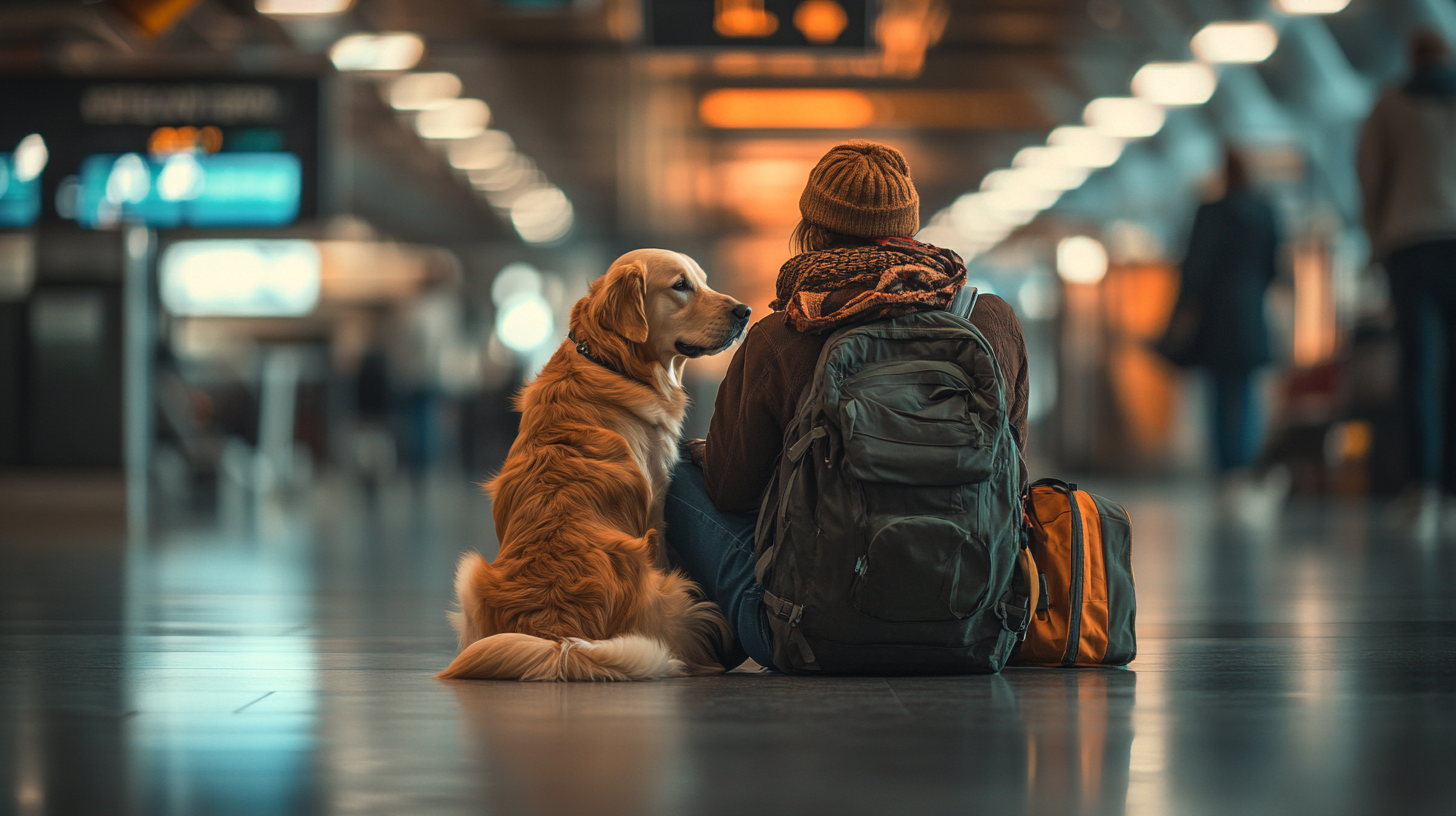
Road Trips with Pets
For those considering road travel, safety is paramount. Begin by acclimating pets with short drives, gradually increasing the duration to build comfort. Ensure vaccinations are up to date, and secure identification through tags and microchips, which are critical in the event of separation. Pets should be restrained using appropriate carriers or harnesses to prevent injury during sudden stops. Planning regular breaks for exercise and hydration contributes to a pleasant journey. Exploring best practices for safe road trips with pets can provide valuable insights for your preparations.
Safety Precautions and Essentials
Always secure pets in well-ventilated carriers and avoid placing them in the front seat, where airbags pose a risk. Prepare a pet-friendly travel kit that includes essentials like food, water, medications, a first-aid kit, and comfort items like toys or blankets. Avoid feeding pets in moving vehicles to prevent motion sickness. Be mindful of weather conditions, and never leave pets unattended in vehicles due to the dangers of extreme temperatures. Consulting comprehensive pet travel safety checklists ensures you have all necessary items and precautions covered.
Final Thoughts
Traveling with pets and service animals can be a rewarding and fulfilling experience when properly prepared. Understanding airline policies, legal rights, and health requirements ensures the safety and comfort of both you and your animal companion. By planning ahead, staying informed, and adhering to regulations, you can enjoy a seamless journey and create lasting memories with your pet by your side.
Follow us back to Seat 5A for more insights and tips on traveling with your furry friends.




